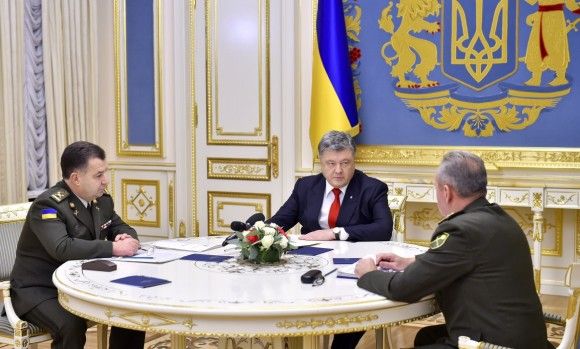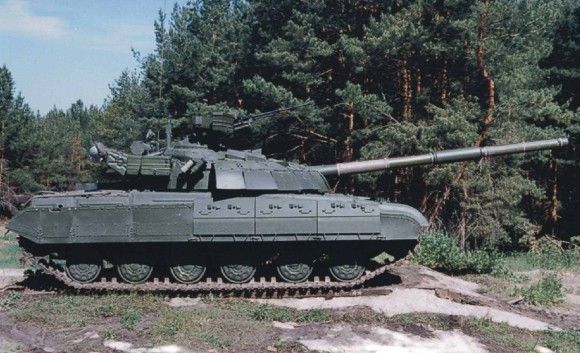Land Forces
Homar Rocket Artillery Programme: Key Decisions to be Taken During the Upcoming Months
Within the upcoming months, key decisions, concerning the Polish Homar (Lobster) long range rocket artillery programme, are going to be taken. Secretary of State at the Polish Ministry of Defence, Bartosz Kownacki, commented, during an interview for Defence24.pl, on the status of this project, during his visit at the Huta Stalowa Wola facility.
Homar, let us recall, also known under the name of WR-300 (analogously to WR-40 Langusta programme – in case of which the launcher range is defined as 40 kilo-meters) is to act as a mobile rocket system for the Polish Armed Forces, with an ability to attack targets at distance of up to 300 kilometres. The programme has been initiated by HSW S.A. which became a leader of a consortium which is to deal with the project. Originally, the aforesaid consortium also involved the WB Electronics company (acting as an integrator of the reconnaissance, fire control and CS4IR systems), along with MESKO S.A. and the WZU no. 2 facility, with the latter entity based in Grudziądz.
At the moment, starting from July 2016, the consortium has been led by the Polish Armaments Group which has become a part of the aforesaid body of companies last year. Nonetheless, Huta Stalowa Wola is going to remain the main acting party which, most probably, is also going to deliver the rocket launchers, along with the assets that would make the whole system mobile. The missiles themselves remain a separate issue, and, most probably, initially, completely assembled projectiles are going to be imported, with an option of domestic assembly of the missiles, or manufacturing of the selected components thereof. Only when such scenario is pursued, it would remain possible to acquire missiles during a term corresponding with the time during which launchers would be ready, along with the remaining components of the division fire modules (units).
Homar, as a priority programme, I hope, is going to have its agreement signed this year. The said programme is one of the three priority programmes, besides Wisła and Orka, and, certainly, this programme is realistic. Homar is a convoluted, and yet the most advanced of the pursued initiatives. I hope that within the upcoming 2-3 months, relevant decisions concerning that issue would be taken. At the moment, detailed negotiation is underway, within the scope of the Polish Armaments Group. The initial offer has been submitted, with indication of three potential contractors.
Secretary of State at the Polish Ministry of Defence, Bartosz Kownacki, commented, when interviewed by Defence24.pl, on the status of this project, during his visit at the Huta Stalowa Wola facility. He hoped that the agreement would be signed by the end of this year. It is not a secret that the game is being played with the Israeli (IMI Systems announced that strategic collaboration would be established with IAI Israel Aerospace Industries Ltd., in order to optimally meet the tender requirements for the programme pursued by the Polish Ministry of Defence, which resultes in a wider, more attractive offer), Turkish (Roketsan Company) and American (Lockheed Martin HIMARS system) offers being taken into account.
It cannot be ruled out that in the process, within which the individual offers would be assessed, not only would the abilities of the rocket system, or the chances for technology transfer for Poland, play a major role, as potential of the military and industrial collaboration that could entail relevant modernization programmes, would also be seen as an important part in the aforesaid initiative. For example, the Americans suggest that surface-to-surface missiles could be utilized in a role of components of the IADS. Moreover, in a longer run, GMLRS rockets that act as the effector in case of the HIMARS system, used by the US Army, are expected to be modernized too. We know that HIMARS is to be integrated with the IBCS module, expected to become an element of the Wisła suite. LPRF projectiles would complement the ATACMS missile, proposed at the moment in the upcoming future.
On the other hand, the Israelis, thanks to a collaboration established between IMI Systems and IAI, decided to expand their offer with the LORA heavy ballistic missiles, that are are characterized by a range exceeding 300 kilometers. Furthermore, the Accular 122 light guided rockets may become an element of the WR-40 Langusta system, greatly expanding its capabilities. The offer prepared by IMI Systems also includes usage of the Extra and Predator Hawk missiles. Turkish Roketsan company has also been expanding its guided missiles offer, the latest solutions within the aforesaid area have been presented during the IDEF 2017 exhibition.
There is yet another factor which may also have a relevant impact on the assessment of the offers - the chassis platform. The basic variant assumes that a 3-axle Kryl-type chassis would be used in the Homar programme. Hypothetically, Homar may also utilize a heavier, 4-axle carrier. Solution as such makes it possible to increase the number of missiles embedded within a single launcher, including the longer range missiles. On the other hand though, this could prolong the works, making the development of a prototype in 2018 highly questionable. Moreover, the issue of integration, or variants thereof, may also be taken into account in the process of selecting an industrial partner for the Homar programme.
Polish Ministry of Defence, Polish Armaments Group and HSW, consequently refuse to signal that any of the offers is advantageous, in comparison with the competing proposals. This is, as it is suggested, to provide Poland with freedom to negotiate, up until the very final stage of the procurement procedure, which would produce the most beneficial conditions of prospective collaboration. The detailed negotiation is going to be carried out throughout the whole length of May. As a result of the above, a decision should be made, concerning the selection of a foreign partner. This is going to be a half-way point - not the final moment of the process. During the subsequent phase, a contract, attractive for all of the parties involved, should be negotiated. In case of a programme so complex, covering several, convoluted components, the said process would not end in weeks.
For the sake of presenting the complexity of the programme, it is worth to recall some of the elementary dates, related to the initiative. The Polish Ministry’s of Defence Armament Policy Department began the development works on a unit which would employ the multiple rocket launchers, also known as Homar, following a detailed description contained in the operational requirements for the armament and military equipment no. 9.2.3, approved by the Polish Defence Minister on 22nd September 2006. The aforesaid works were resulting from the decision No. 291/MON, made on 26th July 2006, during the former term of office of the party currently remaining in power.
During this phase of the analytical procedure, the requirements for design have been defined, and initial tactical-technological-economic analyses were initiated. They were indispensable to make decisions concerning the implementation of the core portion of the work, carry out estimates of the costs required to be covered to implement the initiative, assess the initiative’s effectiveness and develop the substantial basis for the core stage of the R&D work. Throughout the said period, some solutions that are being taken into account now, were non-existent at the time.
The public offer opening within the aforesaid tender involved the representatives of the HSW HSW S.A. and BUMAR Sp. z o.o companies, on 14th June 2010.
The actual works on the Homar programme have been going on since the year 2012, with a result that is quite commonly known. The former government has made an assessment of the technical modernization plan for the Polish Armed Forces, with the Ukrainian crisis experiences taken into account. As a result of the aforesaid analysis, procurement of the Homar system became a priority, and the technical dialogue procedure has been left aside. In such way, the Homar programme became a task, the implementation of which is related to the basic national security interest. The stage at which the design assumptions were defined came to a conclusion in a quite efficient manner. A year before the parliamentary election, the Minister of Defence has issued the Decision No. 410/MON, concerning the procurement of the system.
According to the initial assumptions of the technical modernization plan, made in December 2012, the agreement was to be concluded during the first quarter of the year 2015, hence we may safely assume that we are facing 2 years of delay, within the scope of the programme implementation. The delay was explained with the fact that HSW had been “overloaded” with the burden imposed by other programmes that were being implemented at the time. HSW explained, multiple times, that the analytical works were carried out in their entirety in line with the agreement signed, meanwhile the Ordering Party (Polish Ministry of Defence) did not manage to establish a proper ground for making a strategic decision to select one of the systems indicated, and, which would result from the above choice, to select the foreign partner - which has a severe political ramifications, with serious number of arguments that is needed to be considered.
For the aforesaid reasons, a decision has been made to introduce PGZ into the consortium, and to assign a role of a leader to the Polish defence giant, which is also tied to the fact that Polish Ministry of Defence is involved in the works at this very level. Now, according to the statements made by B. Kownacki, this stage is to be definitively completed.
The current status of the works on the programme, confirmed by the Deputy Minister of Defence, makes it possible to form a hypothesis: should the full offer be accepted this year, and should the agreement be concluded, the Homar prototype shall be created and it should pass the state tests programme within a term proper for the deliveries to begin in 2019. Needless to say, the schedule is fairly tight. Should the plan be implemented in line with the assumptions, the realistic phase during which the missile component of the Polish Army would be resuscitated, after a decline following the decommissioning of the 9K52 and 9K79 launchers, would begin 18 years after this component of the army reached the liquidation phase, and 13 years after the first analyses related to the successor of the obsolete systems began, with those obsolete predecessors dated as far back as the early 1960s.
The issue related to the combat readiness of the Homar units is a separate matter, complicated with finances, logistics, technology, infrastructure, crew training, development of procedures for use in relation to other armament systems used by the Polish Army, also those placed beyond the “Polish Claws” triad.
Moreover, the question of selecting a reconnaissance system for the Polish Army also remains open. The rocket system of such range would become a tool the quality of which would be unmatched, in comparison with the formerly available assets. The expected strike range for this missile system is to be decisively longer, when compared to the aforesaid Soviet solutions, remaining incapable of attacking targets located further than 70 kilometers away. And this concerns systems other than Homar too. A similar problem emerges in case of the NSM missile system, the range of which is defined as 200 kilometers.
The Polish Armed Forces have declared that three squadron-level units would be acquired, 18 launchers each, plus 2 launchers procured for the training purposes. This means that 56 launchers would be series manufactured, plus all of the support platforms, analogous to the ones that are expected to be acquired in case of the Regina and Rak artillery systems. The equipment for the first two WR-300 Homar squadrons is to be delivered before 2022, which translates into Homar production process at HSW being implemented in parallel with production of the Krab SPHs (4 Squadron Modules contracted in December 2016, to be manufactured until the year 2024), along with relevant command vehicles, and, in parallel, with production of the Rak mortars (8 Company Modules until the year 2019), and, most probably, in parallel with the series manufacturing process related to the first batches of the ZSSW-30 unmanned remote control turret systems for the Rosomak APC (separately from this type of turret for the Borsuk IFV, 208 examples are expected to be acquired for Rosomaks, with the series manufacturing process to begin in 2018, and deliveries starting a year later).
Jerzy Reszczyński



